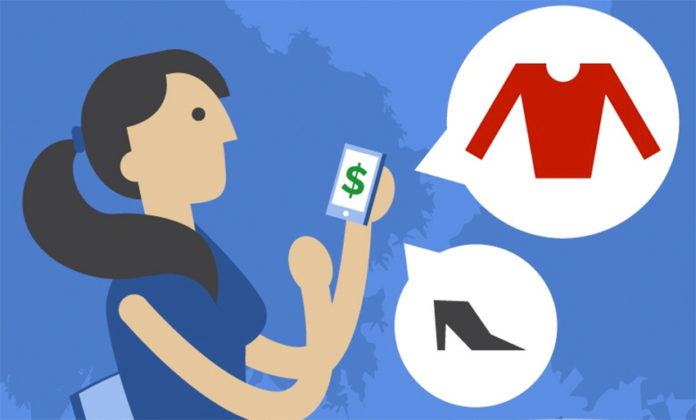Much like the Internet transformed the way people shop online, smartphones continue to innovate the way money is exchanged. Uber and Spotify, for example, are just two mobile apps that are growing far beyond initial expectation. Unsurprisingly, their business models rely heavily on mobile payments through one-click interactions. While many such industries have shifted towards mobile ecommerce (m-commerce) business models, there is one industry that lags behind: fashion. When it comes to purchasing clothing and other items of apparel, mobile conversion rates significantly lag behind conversion rates of laptops (.96% compared to 2.71%) or other devices.
In a 2014 Wired article, Tory Burch LLC reported a tablet conversion rate of 1.5% but a smartphone rate of only 0.5%. The same report showed private shopping club Beyond the Rackwith a similar .9% difference in tablet conversions compared to mobile. In particular, luxury brands have had a tough time adapting to a mobile environment. Because these companies have built a business and legacy around exclusivity, making products easily accessible via mobile phone requires a new mindset and marketing strategy.
In a Retail Week and Microsoft survey, 62 percent of shoppers said they preferred to shop in person for clothing. For clothing, shoppers need to make sure a pair of pants actually fits their body. On the other hand, fashion shopping online comes with its own benefits: it is available 24 hours a day, seven days a week, it often includes special discounts, and it is able to offer a wider selection than physical stores. It’s easy to make the case for buying clothes online and especially on mobile phones — 90% of U.S. consumers keep their phones by their sides around the clock. Yet, fashion lines still struggle with mobile conversion rates.
While these discrepancies exist, statistics show it’s time for fashion companies to master the m-commerce world. Smartphone ownership grew more than 20% from 2011 to 2014, and the numbers are only increasing. 50% of millennials have downloaded mobile shopping apps likeSpring, a virtual shopping mall app that is valued near $90 million, With investors like GV (formerly Google Ventures) and Ashton Kutcher’s Sound Ventures, the mall-like app has been successful and recently gained Uniqlo as one of its 800 vendors.
Like Uniqlo, other fashion businesses are picking up on the trend. American Apparel’s Chief DigitalOfficer Thoryn Stephens recently announced a partnership with delivery service Postmates for “on-demand basics” delivery across the US. But even with a mobile presence, the question remains: how do fashion brands boost mobile conversion rates? Why are people more willing to buy on their laptops or tablets than their phones? For one, fashion requires a very visual shopping experience, but photos may not be optimized for mobile. Plus, smaller screens make browsing and comparing products more difficult – an excellent UX is vital to the customer experience on mobile. On top of that, mobile has to face the same problems that online does: guessing on the right fit.
Existing fashion apps that are highly-rated and increasingly bought out by big corporations share three common characteristics:
- Community. Shopping on mobile doesn’t have to be done independently: people can still feel like they’re shopping with their friends. Polyvore, a fashion app with a 5 star rating on Apple, makes shopping a collaborative experience – it’ provides the experience of going to the mall with your friends while sitting at home on your couch. As soon as users create an account, the app prompts them to connect their social media accounts as well. Shopping is often a social experience, and apps that can imitate that experience are successful – Yahoo paid about $200 million to acquire Polyvore in July.
- Simplicity. It can’t be said enough: clean, effective UI matters. Many of us can relate to opening a web page with the intention of making a purchase, only to be held up by many redirects or misleading forms. A Statista study shows that 1 in 4 shoppers will leave without paying because navigating the website was too complicated. Make the shopping experience as simple as possible for the consumer, and watch mobile conversion rates increase. For example, Spring makes a purchase as easy as just one tap once you’ve stored your size, shipping and credit card information with the app.
- Personalization. Imagine a customer who browsed through a men’s clothing site looking for a shirt for her brother. She just spent a couple of minutes on the page browsing, but when she goes to Facebook, her box ads have all changed to men’s clothing. That’s how easy it is to track online shopping behavior. It may come off as creepy on Facebook, but creating avenues on the app that lets users look at their recent history or leads them to related products will keep them shopping longer. Visual tech company ViSenze said one of its customers boosted mobile conversion ratesby 50% by adding product recommendations to their business. Recommending similar products to consumers is likely to increase sales.
As the younger generations gain more purchasing power over the next ten years, it will be increasingly important to meet them through their favorite medium: their phones. The fashion industry faces lower conversion rates for a variety of roadblocks, but many companies are experimenting with new avenues to boost m-commerce from delivery services to partnering with emerging apps.





